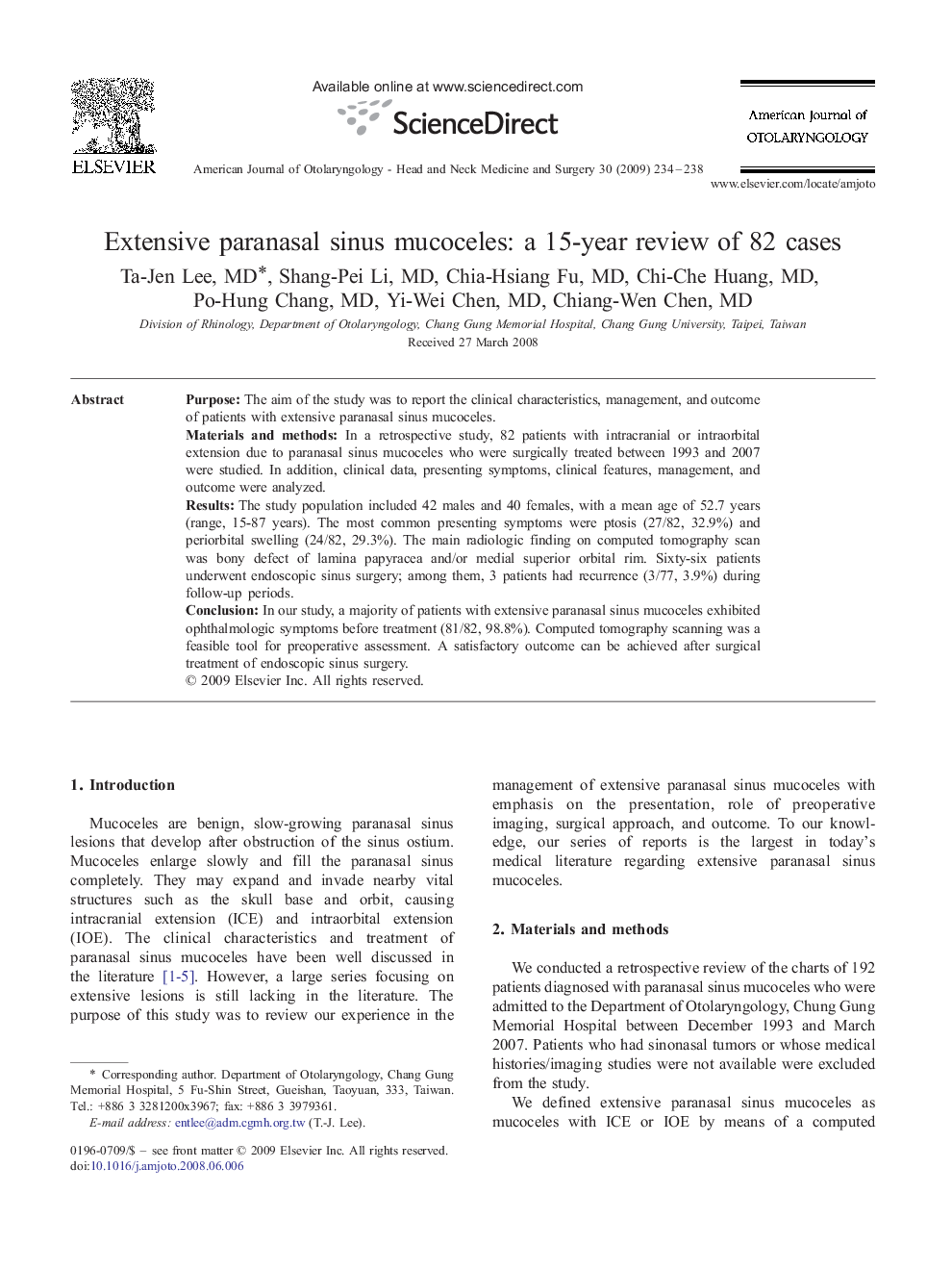| Article ID | Journal | Published Year | Pages | File Type |
|---|---|---|---|---|
| 4104226 | American Journal of Otolaryngology | 2009 | 5 Pages |
PurposeThe aim of the study was to report the clinical characteristics, management, and outcome of patients with extensive paranasal sinus mucoceles.Materials and methodsIn a retrospective study, 82 patients with intracranial or intraorbital extension due to paranasal sinus mucoceles who were surgically treated between 1993 and 2007 were studied. In addition, clinical data, presenting symptoms, clinical features, management, and outcome were analyzed.ResultsThe study population included 42 males and 40 females, with a mean age of 52.7 years (range, 15-87 years). The most common presenting symptoms were ptosis (27/82, 32.9%) and periorbital swelling (24/82, 29.3%). The main radiologic finding on computed tomography scan was bony defect of lamina papyracea and/or medial superior orbital rim. Sixty-six patients underwent endoscopic sinus surgery; among them, 3 patients had recurrence (3/77, 3.9%) during follow-up periods.ConclusionIn our study, a majority of patients with extensive paranasal sinus mucoceles exhibited ophthalmologic symptoms before treatment (81/82, 98.8%). Computed tomography scanning was a feasible tool for preoperative assessment. A satisfactory outcome can be achieved after surgical treatment of endoscopic sinus surgery.
